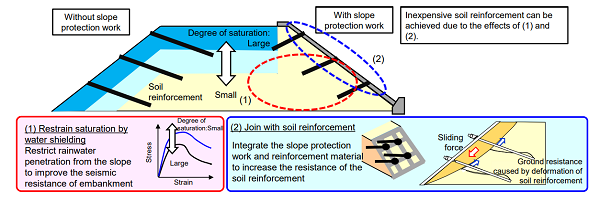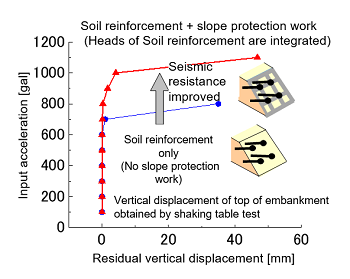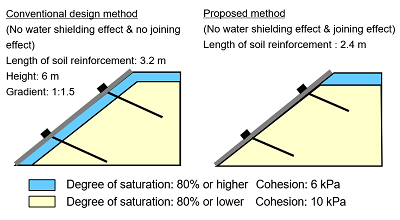13. Antiseismic reinforcement design method for existing embankments by slope protection work and soil reinforcement
Slope protection work is often executed on an embankment as a measure against rainfall. However, the efficiency of slope protection work against earthquakes has not been ascertained yet, and therefore, was not considered at the time of antiseismic reinforcement design.
Accordingly, focusing on the water shielding effect of slope protection work to cover the embankment slope as well as the joining effect of the slope protection work with ground reinforcing bars, an investigation was conducted to ascertain the effects of both and establish an antiseismic reinforcement design method based on them.
As the result of long-term field measurement and numerical analysis using an actual embankment, it was confirmed that slope protection work to cover an embankment had a water shielding effect in restraining the rise of the degree of saturation in the embankment (Fig. 1).
In addition, it was also confirmed, by shaking table test, that the resistance of soil reinforcement was increased by the joining effect to integrate the slope protection work and soil reinforcement, and consequently the seismic resistance of the embankment was improved (Fig. 2).
An antiseismic reinforcement design method incorporating these two effects has been proposed and the reproducibility has been confirmed through testings and on site.
By means of a trial design of antiseismic reinforcement for an embankment using the proposed method, it was found that the installation length of soil reinforcement could be shortened due to the effects of slope protection work (Fig. 3).
This method can reduce the cost of antiseismic reinforcement work for embankments by 5 to 10%.



